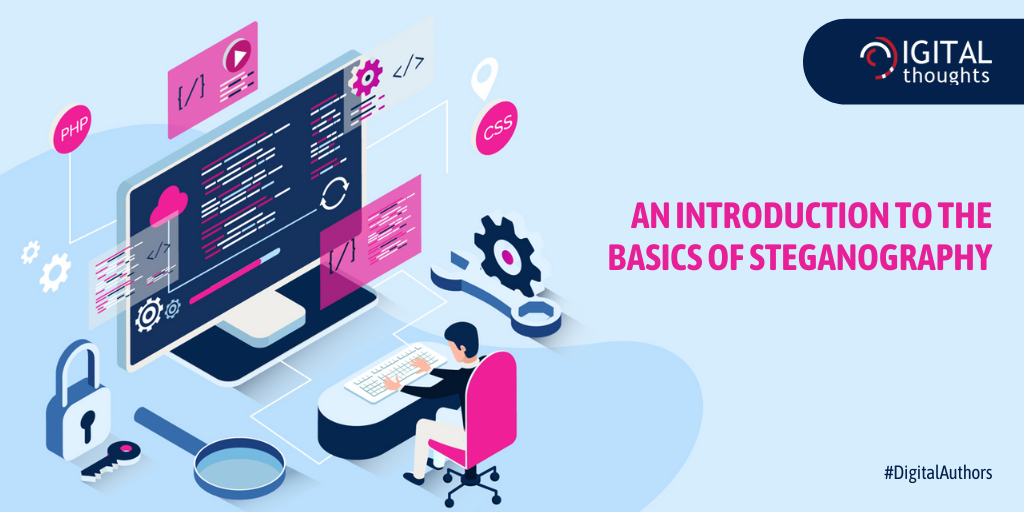An Introduction to the Basics of Steganography

Steganography is derived from the Greek word steganographia, which combines the words steganós, which means "covered or veiled," and -graphia, which means "writing."
Steganography is the art of concealing secret communications within or on top of something that isn't. It's simply a method of hiding a secret bit of text within a text, image, or audio file. A message or script within a document or picture file could be the message. Steganography is a type of clandestine communication whose primary goal is to conceal and deceive. Any medium can be used to hide the message. It's not the same as cryptography, which is a science that allows for privacy. The explanation of steganography explains how it hides data without scrambling or utilising a key or code.

How it Works
The art and science of concealing information by embedding messages in seemingly innocuous objects. It works by substituting bits of different and invisible data for specified pieces of worthless or unused data in typical computer files (for example, text, HTML, audio, or photos).
Types of Steganography
The following are the 4 types of steganography based on the medium used.
a] Steganography in Images
Images are a wonderful way to hide information because they have a lot of redundancy - that is, there are a lot of bits that are there to ensure accuracy well above what is required for the object's purpose (or display). Steganography techniques take advantage of these superfluous bits to hide information/payloads by modifying them in a way that humans and computers can't detect. Digital photographs are frequently used, and because they come in a variety of forms, the algorithms used vary greatly. Some common types of image steganography are as follows:
- Least significant bit insertion.
- Masking and filtering.
- Redundant Pattern Encoding.
- Encrypt and Scatter.
- Algorithms and transformations.
- Least significant bit insertion.
b] Steganography in Audio
The art of secretly encoding secret messages in digital audio is known as audio steganography. Because the human brain has a wide range of aural capabilities, implanting a secret message in audio is extremely challenging. A few methods used are:
- LSB coding.
- Parity coding.
- Phase coding.
- Spread spectrum.
- Echo hiding.
c] Steganography in Video
Video steganography is becoming a popular research topic in many data-hiding technologies, and it's a potential tool since not only are the security requirements for secret message transmission becoming more stringent, but video is also becoming more popular. This will include embedding a video file with supplemental data that will conceal the secret message. Some widely known approaches are
- Least Significant Bit Insertion.
- Real-time Video Steganography
d] Steganography in Documents
This entails concentrating on changing the properties of papers. The majority of individuals can read texts, hence there are numerous options for doing so. Steganography, for example, pricking holes in letters on a page to spell out a message, leverages current information as a cover for secrets. Using data and containers to disguise small notes that show they came from a specific individual or firm is known as steganographic watermarking. A few ways this is done are:
To hide information in plain text, white space is added to the tabs and to the end of lines of documents.
Using a code comprised of a mix of numbers, letters, or line number from a commonly available cover source like as a book or newspaper. The information inside the cover source will not expose the concealed message, and the only way to decode it is to gain the key.
Another extensively used steganography approach is the use of backdrop colour and typography. It's a common feature in Microsoft Word documents.
Some Examples of Steganography
Steganography is more of a work of art than a scientific discipline. It entails employing meticulous methods to conceal and carry out the message. With such a diverse range of technologies available today, there are no limits to how steganography can be applied. A few examples are:
- Noise or sound is used to encrypt a message or image within a photograph.
- Reversing the playback of an audio track to expose a concealed message.
- Adding a message to the RGB image's red, green, or blue channels.
- Increasing the frame rate of a video to reveal a concealed message.
- Using the file header or metadata to conceal information.
Currently, the most prevalent application of steganography is to conceal one computer file within another. The least significant bits of the data encoding the colour of each pixel of the image are used to encode the hidden file. Changing the least significant bits alters the image's appearance only slightly, and the difference is undetectable to the naked sight. If the shift is noticeable, the colours will appear slightly wrong, as if the image was captured with a low-resolution camera in low light.

